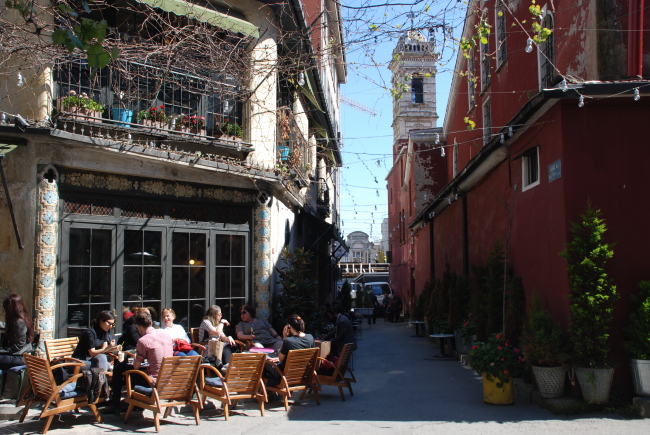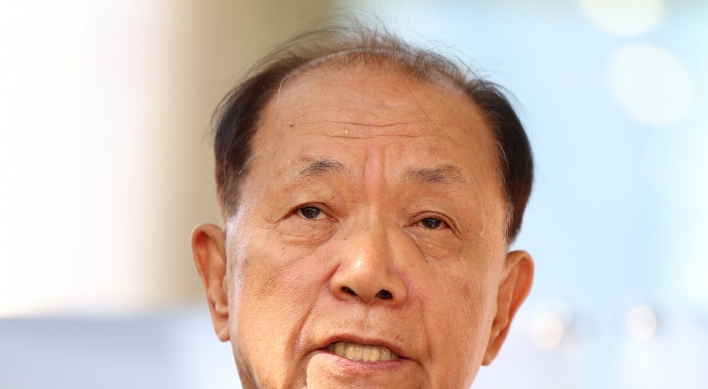ISTANBUL (AP) ― Istanbul, the noisy metropolis on the Bosporus Strait lauded by many a travel ranking, has much more to offer than grand mosques and bazaars. Away from the din of typical tourist haunts, a walk around the neighborhoods of Karakoy, Balat and Kuzguncuk will peel back the surface to reveal the city‘s multilayered history, and the lifestyles of those who’ve lived it.
And while headlines persist on Turkey‘s uneasy political situation, which included a recent government shutdown of Twitter to silence critics, protests have dwindled for now. For tourism, it’s business as usual, with the government counting 35 million people visiting last year, a 10 percent increase over the previous year. As proof of Turkey‘s popularity among travelers, TripAdvisor just named the country the world’s top destination, based on the website’s ratings and user reviews.
And while headlines persist on Turkey‘s uneasy political situation, which included a recent government shutdown of Twitter to silence critics, protests have dwindled for now. For tourism, it’s business as usual, with the government counting 35 million people visiting last year, a 10 percent increase over the previous year. As proof of Turkey‘s popularity among travelers, TripAdvisor just named the country the world’s top destination, based on the website’s ratings and user reviews.

Karakoy
Descending from the Galata Tower in the Beyoglu district, often regarded as the “pulse of Istanbul,’‘ one of the city’s steepest hills will lead to Karakoy, an up-and-coming area hemming the Bosporus Strait.
This one-time industrial neighborhood is still home to a number of shops where anything from fishing equipment to Bunsen burners can be procured. But the hardware stores and workshops must now negotiate their space with new galleries and cafes that have created a hub for young hipsters.
Past the Karakoy ferry terminal, one street over from the water, look for Namli Gurme, a restaurant and small marketplace offering a large selection of “mezes,” or cold appetizers. Also served here is a cut of meat called “lokum,” which means Turkish delight and is the term for anything wildly tasty and juicy (unlike the narrower meaning of the term Turkish delight outside the country, referring only to chewy sugary candies).
One of Istanbul’s busiest baklava shops is next door, known for “sutlu Nuriye” or milky Nuriye, a puffier and creamier version of baklava. Farther north along the road parallel to the Bosporus, past a few deserted buildings and construction sites, a green iron gate opens into the Franciz Gecidi Is Merkezi, a small collection of cafes and restaurants. Around an easily missed corner toward the Mother Mary Turkish Orthodox church nearby is another hidden nook for cafes that are usually full on the weekends.
You can wander through galleries and boutique shops punctuating rows of nondescript buildings before reaching the luxurious renovated Kilic Ali Pasha Hamam and the more widely known Istanbul Museum of Modern Art.
Balat
The Balat district is a quiet historic area by the Golden Horn, the narrowest stretch of the Bosporus. Its twisting streets and weathered houses, like antiques in an open museum, echo a past occupied by waves of Jewish, Greek, Bulgarian and Armenian residents. These ethnic groups were forced out or chose to move in response to political events or socioeconomic conditions at various points in the 20th century, and the area is now home mainly to working-class Turks from Black Sea towns and Central Anatolia. Adventurous tourists who can find the beauty in the decaying buildings and who are willing to forgo the reliability of a map or definitive street names, will enjoy wandering the hilly streets.
-
Articles by Korea Herald







![[KH Explains] No more 'Michael' at Kakao Games](http://res.heraldm.com/phpwas/restmb_idxmake.php?idx=644&simg=/content/image/2024/04/28/20240428050183_0.jpg&u=20240428180321)











![[Herald Interview] Mistakes turn into blessings in street performance, director says](http://res.heraldm.com/phpwas/restmb_idxmake.php?idx=652&simg=/content/image/2024/04/28/20240428050150_0.jpg&u=20240428174656)
